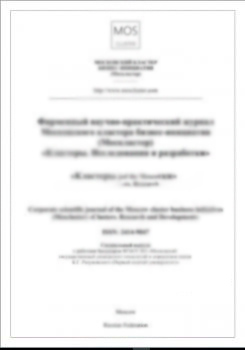Kemerovo, Kemerovo, Russian Federation
Purpose: evaluate the prospects for the production of vegetable analogs of meat, study the history of creation and the need for their development.
analogue of meat, food of the future, cultured meat, vegetable meat
1. Mottet A, de Haan C, Falcucci A, Tempio G, Opio C, Gerber P. Livestock: on our plates or eating at our table? A new analysis of the feed/food debate. Glob Food Sec. 2017;14:1-8. doi:https://doi.org/10.1016/j.gfs.2017.01.001.
2. Gerber PJ, Steinfield H, Henderson B, Mottet A, Opio C, Dijkman J, et al. Tackling climate change through livestock: a global assessment of emissions and mitigation opportunities. Rome: Food and Agriculture Organization of the United Nations [FAO]; 2013.
3. Springmann M, Clark M, Mason-D’Croz D, Wiebe K, Bodirsky BL, Lassaletta L, et al. Options for keeping the food system within environmental limits. Nature. 2018;562:519-25. doi:https://doi.org/10.1038/s41586-018-0594-0.
4. Joshi VK, Kumar S. Meat analogues: plant based alternatives to meat products: a review. Int J Food Ferment Technol. 2015;5:107-19. doi:https://doi.org/10.5958/2277-9396.2016.00001.5.
5. Frewer LJ. Consumer acceptance and rejection of emerging agrifood technologies and their applications. Eur Rev Agric Econ. 2017;44:683-704. doi:https://doi.org/10.1093/erae/jbx007.
6. Kyriakopoulou K, Dekkers B, van der Goot AJ. Plant-based meat analogues. In: Galanakis CM, editor. Sustainable meat production and processing. London: Academic Press; 2019. pp. 103-26.






